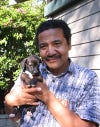Maps are Metaphors
Where would we be without maps? Especially when we’re on a dusty road and have never been here before. We either are on our way to a set destination, or we seek to experience new things in a land that we are unfamiliar with. Maps can define our surroundings, define who is in charge of the land, explain how to get from point a to point b, or simply convey what we can do or not do.
I am of an age that my early classrooms had rolled up maps hanging above the chalk boards. We also would carry paper maps in the dashboard of our cars. Maps served a metaphorical function of defining our world for political purposes and navigation. We used maps to represent the real world, and maps limited what we could imagine and describe. You could buy books of maps for your car. I had a thin but large book of low detail driving maps of the whole country. I carried a Thomas Bros., map book in my car. It was for Los Angeles and Orange County. I could find my location before GPS or map apps in smart phones.
Maps have served people for centuries. Here are several factors about maps:
1) Maps help to understand, describe, and convey details to others of particular territories.
2) A map does not relate the truth about the landscape, rather it is a representation of the landscape.
3) Different maps can convey similar information.
4) Maps contribute to the shaping of boundaries and limits of conversation topics. About what it is possible to see, imagine, and talk about.
5) Maps can expand our conversations…
Maps appeal to a direct need we have. We want to gain advantages over other people, and have an understanding of our surroundings to give us power and agency. Maps work for us in so many ways. They pass on information in text and picture form. They contain nets of data crowded on squares of paper or computer screens. We can communicate with maps, but often take this form of information for granted.
The world around us can be defined by the maps we use. They tell us we are home, we can be comfortable. We can own a place and belong to a place. We have possession of our surroundings. Maps have historically been a driving force in how we understand the world. How we set up the maps and present the maps reveals our bias and beliefs about our power. A map containing marked borders dictates political separation and nations. Maps can demonstrate who belongs with who, and who is persona non grata.
There has been strong political utility for the production of maps. As the quote goes, “History is written by the winners.” I would add that, maps are drawn by those trying to win. We can find many examples of expansionist nations sending out mapmakers to draw the boundaries for new hoped for territories.
I hope to bring more visibility and consciousness to maps and how we use them. I would remind scholars and everyday users that the map is not the territory. Making maps is not an isolated pure science. Map-making is an intentional act that has political and social ramifications. The true delineations of our planet are often conveyed imprecisely with our biases.
However, maps give us power, agency, and competency. They can expand our world and help us understand more. Maps serve as metaphors to aid us in navigating our terrain. With our minds we imbue the maps with the magic that says they represent real things and differences in the world.
“One can indeed know the world without going out of the door! By looking at maps one can know terrestrial distances and get help in the work of government.” from Kwan Kun in the preface to the Kangnido World Map of 1402. Maps can serve us, if we understand their metaphorical power.
Resources:
A History of the World in 12 Maps, by Jerry Brotton 2013
The Power of Maps, by Denis Wood 1992
‘Teaching and Learning: Maps as Metaphor’ Kate Seymour 2007
